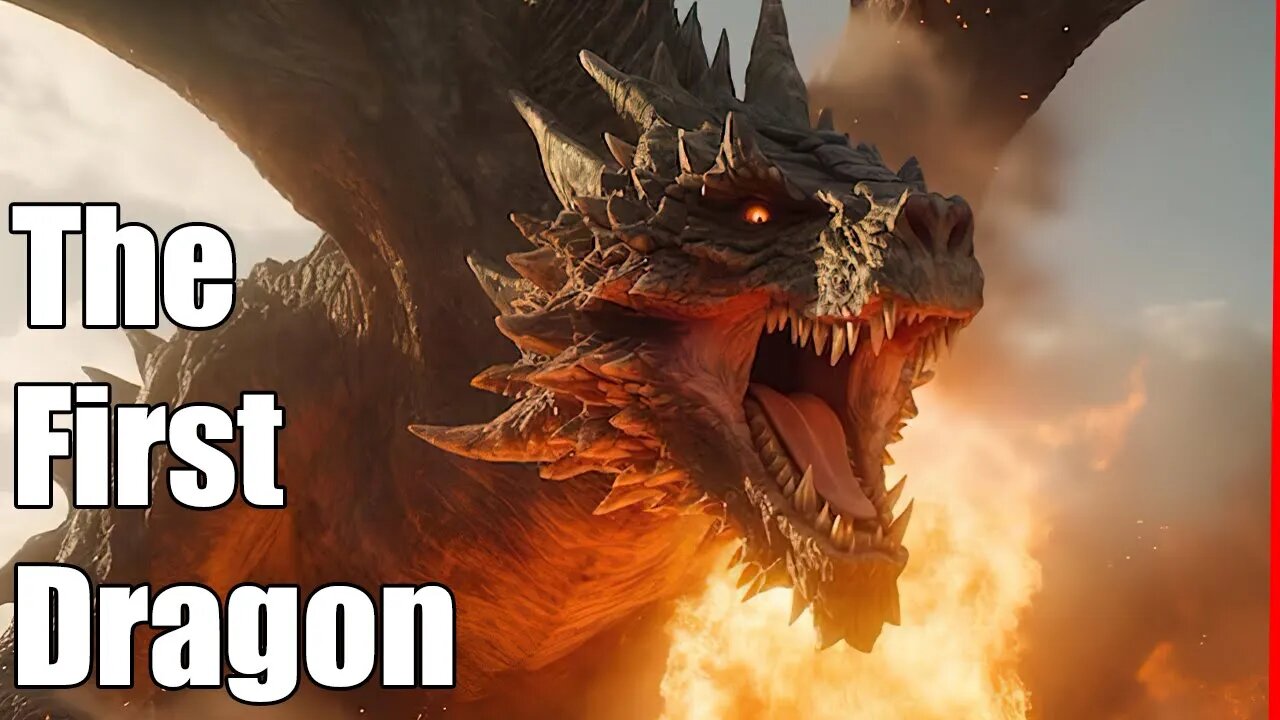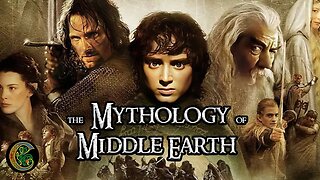Premium Only Content

The Oldest Dragon Myths and its Origins
The Dragon Myth is one of the oldest mythologies in human history, and is known all across the world, hinting at its early origins. In this video we follow these myths to their origin, the first mythology and the time it started, and on the journey we explore myths form China (Loong), Australia (The Rainbow Serpent), Africa (The Rain Snake), and Europe (Vrtra and NgWhi), as well as Paleolithic Rituals, and the psychology of why the myth has persisted so long.
*If you want to support my research and see behind the scenes work, watch my videos early, and other insights then please become a Patreon*: https://www.patreon.com/crecganford
*References used by Researchers* split by Geographic Region to which they apply can be found in the paper: D’Huy, Julien. Le motif du dragon serait paléolithique: mythologie et archéologie. 2015. HAL Open Science. I couldn't note them here as they were longer than the description allows.
*Additional References used by Crecganford:*
Azania: Archaeological Research in Africa (2013): ‘Rain snakes’ from the
Senqu River: new light on Qing's commentary on San rock art from Sehonghong, Lesotho, Azania:
Archaeological Research in Africa, DOI: 10.1080/0067270X.2013.797135
Orphen 1874 (see PDF)
Balcetis E. and Dunning, D., 2010 - Wishful seeing: more desired objects are seen as closer. Psychological Science, t. 21, 147e152.
Blust, Robert. The Origin of Dragons. Anthropos , 2000, Bd. 95, H. 2. (2000), pp. 519-536.
D’Huy, Julien. Le motif du dragon serait paléolithique: mythologie et archéologie. 2015. HAL Open Science.
Lobue V. and Deloache J.S., 2008 - Detecting the snake in the grass: Attention to fear-relevant stimuli by adults and young children. Psychological Science, t. 19, p. 284–289.
Öhman A. et Soares J., 1993 - On the automatic nature of phobic fear: Conditioned electrodermal responses to masked fear-relevant stimuli. Journal of Abnormal Psychol¬ogy, t. 102, p. 121-132.
Öhman A., Soares S.C., Judth P., Lindstorm B. et Esteves F., 2012 - Evolutionary derived modulations of attention to two common fear stimuli: Serpents and hostile humans. Journal of Cognitive Psychology, t. 24, p. 17–32.
Paulme’s “La Mère dévorante : Essai sur la Mor¬phologie des Contes africains”, 1976
Penkunas M.J. et Coss R.G., 2013 - A comparison of rural and urban Indian children’s visual detection of threatening and nonthreatening animals. Developmental Science, t. 16 (3), p. 463-75.
Propp, 1983. Les racines historiques du conte merveilleux
Chapters
==================================
0:00 Introduction
1:57 Background of Research and Defining Dragons
2:27 A Chinese Dragon Myth
5:42 Phylogentics
9:42 An Indic Dragon Myth
10:46 The Dispersal of the Dragon Myth
16:34 An Indo-European Dragon Myth
17:53 Dragon Rituals
19:01 Physical evidence of Dragon belief
21:18 An Australian Dragon Myth
24:16 The Myths are Connected
24:46 Why did the Dragon Myth persist?
27:47 A South African Myth
31:38 Putting this all together
-
 26:43
26:43
Crecganford
1 year ago $0.02 earnedThe Mythology the inspired Tolkien
119 -
 DVR
DVR
AimControllers
2 hours ago $1.59 earnedTRIVIA NIGHT!! WIN CUSTOM CONTROLLERS!!
15.3K3 -
 LIVE
LIVE
Barry Cunningham
3 hours agoWELCOME TO THE FANFARE MOVIE NIGHT! YOU WON'T WANT TO MISS THIS INTERVIEW AND FILM!
7,305 watching -
 15:23
15:23
Mrgunsngear
10 hours ago $0.29 earnedSig Sauer Enclosed Sig Loc Romeo-X Compact Red Dot Torture Test & Review
2.07K2 -
 LIVE
LIVE
PandaSub2000
1 day agoLIVE 9pm ET | PICTIONARY & ANTICIPATION with Chat!
123 watching -
 LIVE
LIVE
megimu32
2 hours agoON THE SUBJECT: The Villains We Loved to Hate - Childhood Trauma Reloaded
113 watching -
 LIVE
LIVE
SpartakusLIVE
5 hours ago#1 Verdansk HERO || Live EARLY off EARLY
135 watching -
 LIVE
LIVE
Precision Rifle Network
1 day agoS4E21 Guns & Grub - New Optics and Chronographs
61 watching -
 7:28:28
7:28:28
Dr Disrespect
10 hours ago🔴LIVE - DR DISRESPECT - WARZONE VERDANSK - EXTREME CHALLENGES
149K7 -
 26:31
26:31
Glenn Greenwald
7 hours agoTrump at the NATO Summit: Michael Tracey Reports from The Hague | SYSTEM UPDATE #477
91.5K14